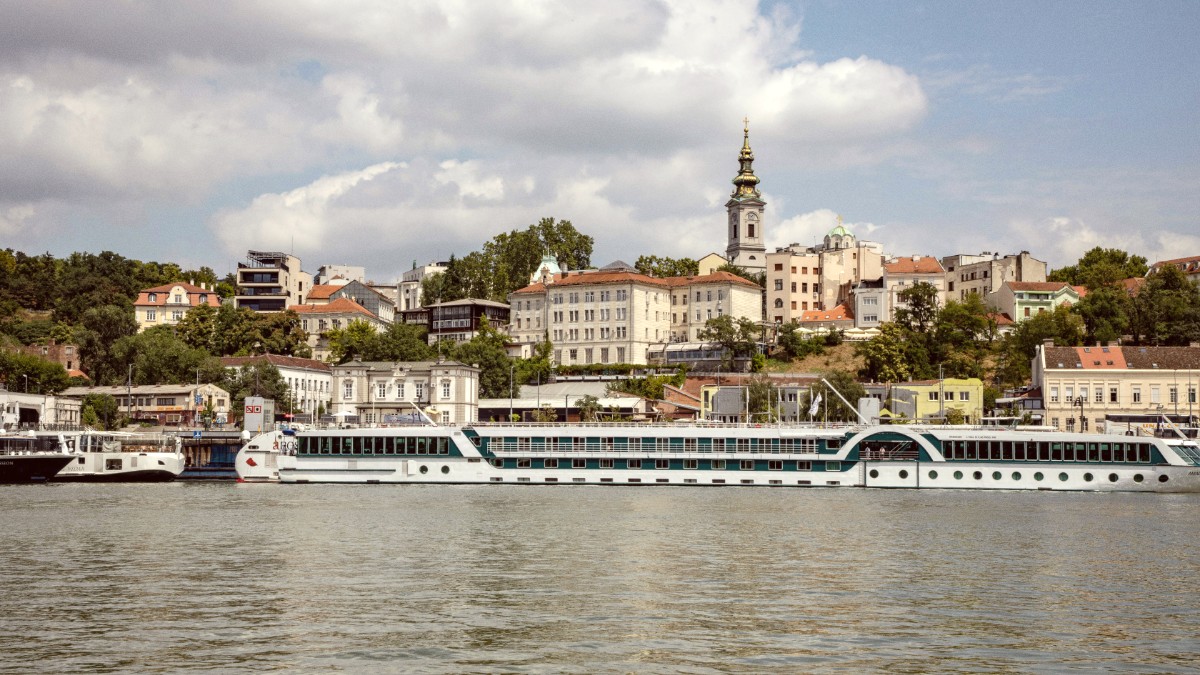
Serbia
Prepare for genuine hospitality, a lively atmosphere, and discoveries around every corner. Belgrade is not just a place to visit; it is a city to feel, to taste, and to remember. It is a journey that speaks to the soul of any traveler seeking authenticity and dynamism. You will find a city that welcomes you, shares its stories, and invites you to become a part of its ongoing narrative.
Belgrade, known as Beograd in Serbian, is the capital and largest city of Serbia, with a geographical position of considerable importance. It sits at the confluence of two significant European rivers: the Sava and the Danube.
This strategic meeting point marks where the vast Pannonian Plain, stretching across Central Europe, transitions into the Balkan Peninsula, a region rich in diverse landscapes and cultures. The city's core itself rests upon a series of hills and ridges, naturally forming elevated points historically valuable for defense and observation. Kalemegdan Fortress, for instance, offers commanding views directly over the river confluence.
Belgrade holds a deep history, stretching back over 7,000 years, making it one of Europe's oldest continually inhabited cities. Its tumultuous past earned it the moniker "White City" (Beli Grad), a name often associated with its many destructions and rebuildings. The story begins in the 3rd century BCE with the Celtic tribe Scordisci, who founded Singidunum. This early settlement established Belgrade's location as a place of strategic importance. Later, it became a significant Roman fort and city. Remnants of Roman walls and structures exist within the Kalemegdan Fortress.
After Rome's fall, the region saw succession, with Belgrade often serving as a border stronghold for the Byzantine Empire. In the 15th century, Belgrade experienced a golden age as it became a Serbian capital under King Stefan Lazarević. He fortified the city extensively, transforming it into a formidable stronghold and a cultural center. This period of Serbian rule left a legacy of resilience and national identity.
Longest foreign rule, shaping architecture and culture. Contested by Habsburgs.
Western European influence, notably in urban planning and cultural orientation.
Political and cultural heart of the unified South Slav state. Modernization and expansion, including New Belgrade.
Embraces diverse history while looking forward. A living part of the city's spirit.
The Ottoman influence reshaped Belgrade's architecture, culture, and daily life, introducing new customs and a distinct Eastern character. You can see this legacy in certain architectural styles and culinary traditions. Brief periods of Habsburg Rule brought Western European influence to Belgrade. During these intervals, notably in the 18th century, Belgrade began to take on a more Central European appearance, especially in parts of the Old Town, creating a fascinating architectural blend.
The city's history is not just a timeline of events; it is a living part of the city, visible in its architecture, its people, and its spirit.
Its position as a natural crossroads, a bridge connecting Eastern and Western Europe, has defined Belgrade's destiny throughout centuries.
Belgrade truly combines remnants of a tumultuous past with a modern, energetic urban culture. This fusion makes it a compelling destination for those seeking depth and excitement.
A central feature of the city is the formidable Belgrade Fortress, known as Kalemegdan. This ancient citadel, standing at the confluence of the Sava and Danube rivers, bears witness to Belgrade's enduring strategic importance. You can spend hours exploring its extensive grounds, walking through different historical periods visible in its walls and structures, and enjoying panoramic views that stretch across the rivers and the city.
The majestic Church of Saint Sava also dominates Belgrade's skyline. One of the largest Orthodox churches in the world, its grand scale and intricate design are impressive. While still undergoing construction and interior decoration, its sheer presence and the beauty of its completed crypt with stunning mosaics draw visitors seeking spiritual insight or architectural wonder.
The main thoroughfare, with elegant 19th-century buildings housing shops, cafes, and cultural institutions.
A charming bohemian quarter with cobblestone streets, traditional Serbian restaurants (kafanas), and live folk music.
Areas like Beton Hala and famous splavovi (floating clubs and restaurants) moored along the Sava and Danube rivers.
Belgrade is a hub for culture, arts, and entertainment in the Balkans. It hosts numerous festivals, concerts, and exhibitions throughout the year.